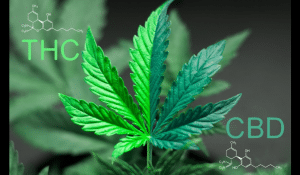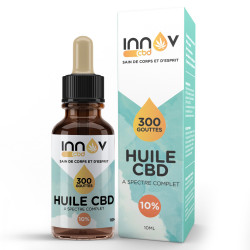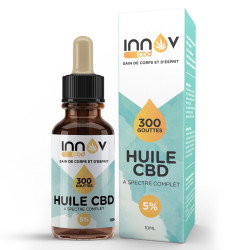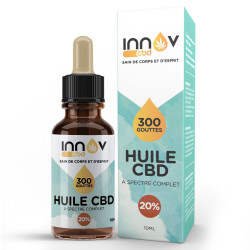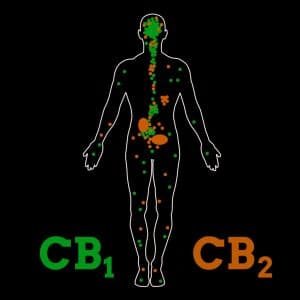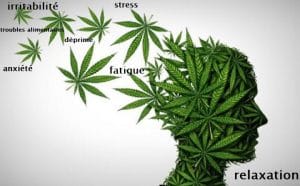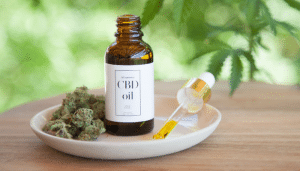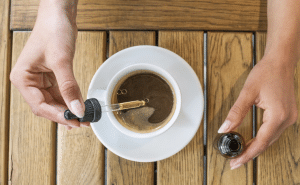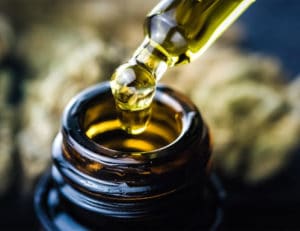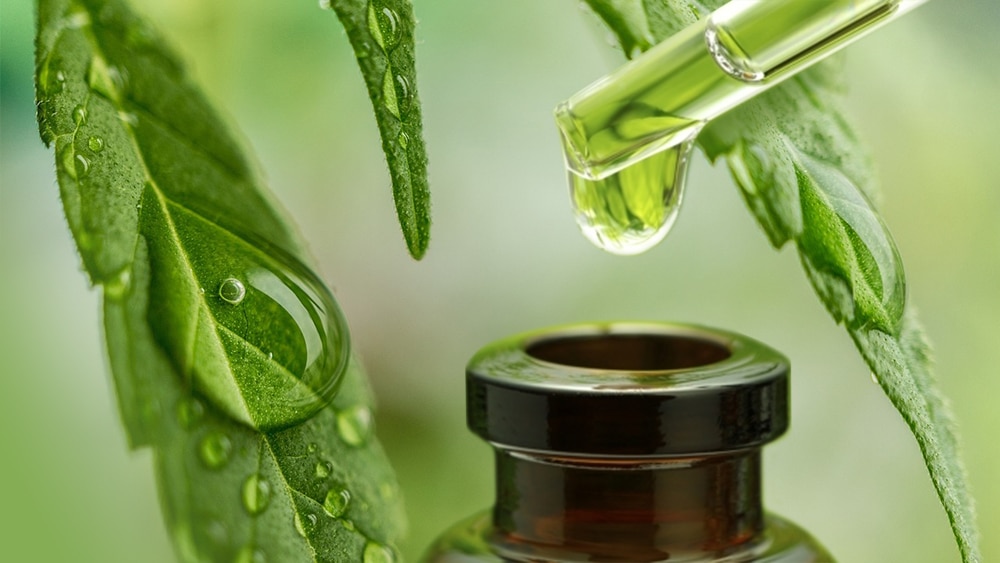
Cannabidiol (CBD) is one of the active substances (cannabinoid) found in significant concentrations in cannabis. Unlike tetrahydrocannabinol (THC), the CBD molecule does not have psychotropic effects. Therefore, it is not included in the list of narcotics. This characteristic distinguishes it clearly from THC. For a long time, cannabis was considered a simple drug for recreational use. But in recent years, many benefits have been highlighted by consumers suffering from chronic pain.
Today, a legislative and medical chill prevents CBD from being considered as truly therapeutic. However, many meticulous studies seek to confirm or not its virtues!
In any case, it is increasingly part of a growing global market. It takes advantage of a legal vagueness of the French law (cannabis vs CBD). As a result, it is found in many products in the windows of
CBD shops
. There are various forms of goods on sale containing CBD (flowers, balm, capsules, liquids, …). But, the oil, remains the flagship product of CBD users! Direct consequence of its effects and its simplicity of absorption. But in fact, what is this coveted CBD oil?
A few reminders about CBD and its derivatives
CBD or cannabidiol, like THC, is one of the many (about a hundred) cannabinoids present in hemp. Mainly found in cannabis leaves and flowers, this molecule has become very popular in recent years. However, it is still sometimes misunderstood by those who are new to the subject. If the latter rightly associate CBD and cannabis, they unfortunately still have an unfortunate tendency to equate it with a drug.
What the law says about cannabis:
- “In application of article 5 of the 1971 law, the possession of narcotic products, and therefore of cannabis, is prohibited without authorization” (1).
In reality, it is the THC molecule that is the psychotropic substance prohibited in France. The cannabic products found on the market, such as CBD oil, are totally legal:
- Their concentration in THC is almost null (tolerance < 0,2%) even non-existent.
In 2017, a report from
WHO (World Health Organization) described cannabidiol as non-toxic
:
- “During its November 2017 meeting, the WHO Expert Committee on Drug Dependence concluded that, in its pure state, cannabidiol (CBD) does not appear to have abuse potential, nor does it appear to be harmful to health. Thus, as cannabidiol is currently not classified as a substance in its own right (only as a compound of cannabis extracts), current information does not support a change in status or classification of this substance” (2).
If the affinity of tetrahydrocannabinol for the CB1 and CB2 receptors of the endocannabinoid system leads to psychic modifications, it is because it binds more rapidly to the receptors than the endocannabinoids themselves (cannabinoids naturally present in the body: anandamide and 2-arachidonyl-glycerol). Thc will then mimic the effects of anandamide but in a roundabout and potent way which causes brain and physical disorders.
Cannabidiol (CBD) has no significant affinity for endocannabinoid receptors, its action mainly inhibits the production of the FAAH enzyme (fatty acid amide hydrolase) responsible for the regulation of the anandamide molecule. The result is a hyper-production of this endocannabinoid which will then promote positive protective and innate responses of the body (relaxation, relaxation, anti-pain,..). At high concentrations, CBD can also inhibit the actions of THC fixed on CB1 receptors which will cancel the psychotropic effect of the molecule.
For its many properties such as muscle and brain relaxation, CBD can not yet claimIt may be a therapeutic treatment in the same way as a drug, but a large number of scientific studies and many testimonies from its users highlight its benefits in helping certain everyday ailments:
- insomnia, chronic headache, certain minor pains, anxiety, stress…
To date, the product containing CBD 100% legal, the easiest to use and the most effective is by far :
CBD oil.
CBD oils and their different extraction methods
Simply put, CBD oil is a cannabis concentrate. Depending on the method of extraction, it differs in its composition. There are mainly 3 methods to extract CBD from the plant:
CBD oil extraction by liquid chemical solvents
Here, we use the whole cannabis plant. Once
decarboxylated
(cleared of its acid carboxyls by being heated), the hemp plant is soaked in liquid solvents (ethanol or butane or isopropyl alcohol). The latter will separate the cannabinoids, terpenes (mainly responsible for the organoleptic properties of marijuana) and flavonoids (phyto-nutrients responsible for the color of the pistils of cannabis flowers) from the rest of the plant material. The liquid obtained is then heated, which allows evaporation, thus facilitating the recovery of the finished product:
- cannabis oil
This method is by far the simplest and least expensive. On the other hand, the use of solvents is not harmless because they indirectly affect the quality of oils obtained. For example:
- Ethanol also tends to extract chlorophyll from the plant. The result is a bitter, long-lasting and unpleasant taste in the mouth.
- Butane leaves toxic residues in the oil. So it’s not the best for your health. Because of its price and because the active substances of cannabis are fully extracted, this type of extraction is mainly used in the manufacture of electronic cigarette liquids. The latter are often cut with synthetic terpenes to compensate for the poor taste. A specialty store that is vigilant about the quality of its merchandise should not sell solvent extracted CBD oils.
The extraction of CBD oil by vegetable oil
With this practice, the plant is directly heated in vegetable oil (sesame or olive type). The separation of the active substances is done naturally thanks to their lipophilic properties. This extraction technique is inexpensive, simple, the most natural and by far the healthiest for the body. However, it is very difficult with this technique to know the dosage of CBD molecules in the finished product. It is perfect for homemade extraction of cannabis oil or for cannabidiol balms and ointments. But, the oils on the market CBD cannot be derived from it.
CBD oil extraction with supercritical Co2
It consists in putting the whole plant of cannabis, decarboxylated beforehand, in a press system. Different successive chambers, with varying temperatures, circulate the CO2 in the hemp and select thus the desired substances. It results in an isolation of certain cannabinoids (very concentrated oil).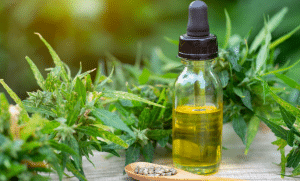
This method is much more complex to develop and more expensive. Indeed, it requires advanced laboratory equipment. On the other hand, it is of much better gustatory quality. As for its CBD dosage, it can be easily controlled.
Opinion on the best method of extraction of CBD oil
Each of these methods has its qualities and disadvantages. However, a CBD shop that respects itself, must offer only one for sale: CBD oil extraction with supercritical CO2. And that is if:
- it wants to respond seriously to the French legislation
- customer satisfaction is a priority
Whatever the technique, it is important to take into account the varieties of cannabis in order to remain within the law. Indeed, only hemp with a THC concentration lower than 0.2% is legal.
The different types of CBD oils
In CBD shops that are attentive and respectful of consumer expectations and that work with a serious laboratory and cannabidiol farm, CBD oil is found essentially in 2 forms:
- Full spectrum oil: This full spectrum oil (fullspectrum) is derived from a CO2 extraction of legal cannabis varieties. Contrary to the oils with broad spectrum (broadspectrum), the oil known as pure (raw oil) preserves all the concentrations of origin of the majority of its molecules (CBD, THC, terpenes, flavonoïdes,?) present naturally in a plant of cannabis. In France, the THC content of the hemp used to make this oil must never be higher than 0.2% for it to be legal. This oil is slightly more expensive than other CBD oils. But, it is important to understand that quality has a price. Here, everything is controlled, analyzed and elaborated! And this, from the hemp seeds to the finished CBD product!
- Broadspectrum oil: This broadspectrum CBD oil is similar to the full-spectrum oil in one respect. It has just undergone one more step to remove the THC naturally present in the plant. But, this step is crucial because this extraction is often done with ethanol. This results in the breakdown of other cannabinoids, terpenes and flavonoids. This will have an impact on the flavors and effects of the oils. On the other hand, they have the excellent quality of being 100% legal since they have no trace of THC. There, we don’t talk about thresholds anymore, they are clean!
Choosing the best CBD oil
To choose your CBD oil, it seems logical to go towards products :
- organic guaranteed without pesticides
- meets the legislative standards of the country relating to its consumption
But, these selection criteria aside, there is no better oil. This notion is too subjective and specific to each individual.
The effects of CBD oil
CBD oils can be found in different rates:
- Cannabidiol concentration starting from 5% and generally going up to 30%.
These levels meet very particular and specific needs for an individual. On the other hand, they will not necessarily be the ideal of another.
Represented by 2 types of spectra (fullspectrum or broadspectrum) and from different varieties of cannabis plants, CBD oils will obviously not have the same effects and the same gustatory qualities from one oil to another. But, also from one individual to another!
- Each organism responds differently physiologically and physically to identical stimuli
The best CBD oil for its benefits
If we isolate personal tastes and focus on the benefits of CBD oil, then yes! There is indeed a better oil than the others:
The effect of each active substance in this oil interacts with the potential of the other molecules. This molecular collaboration then increases the plurality of reactions and their efficiencies. We speak of the “entourage effect” described by an Israeli researcher, Raphaël Méchoulam, in 1998 (3). This effect is still widely studied.
However, some people prefer keep the unique effect of CBD alone (CBD isolate) when others want a more powerful effect. It’s all a matter of taste!
The use of CBD oil
Generally, CBD oil is packaged in small bottles:
- opaque in order to preserve all their properties
- to take them everywhere easily and discreetly
- often equipped with a dropper cap to facilitate ingestion (sublingual or directly swallowed)
According to the needs of each one, the CBD oil is proposed by the
CBD shops
with quantities of active molecules more or less important. As it is full of the relaxing benefits of CBD, cannabidiol oil combined with other legal active ingredients (
fullspectrum)
from marijuana, is a real concentrate of positive effects in a few drops!
FAQ: definitions around CBD oil
[sp_easyaccordion id=”11027″]
References:
- The decriminalization of cannabis consumption, Senate: https: //www.senat.fr/lc/lc99/lc992.html
- Cannabidiol (cannabis compound), WHO: https: //www.who.int/features/qa/cannabidiol/fr/
- Scientific Reserch Publishing: the Bell-Shaped Dose-Response of Cannabidiol by Using Cannabis Extract Enriched in Cannabidiol, Ruth Gallily1, Zhannah Yekhtin1, Lumír Ondřej: Hanuš2, https://www.scirp.org/pdf/PP_2015021016351567.pdf
